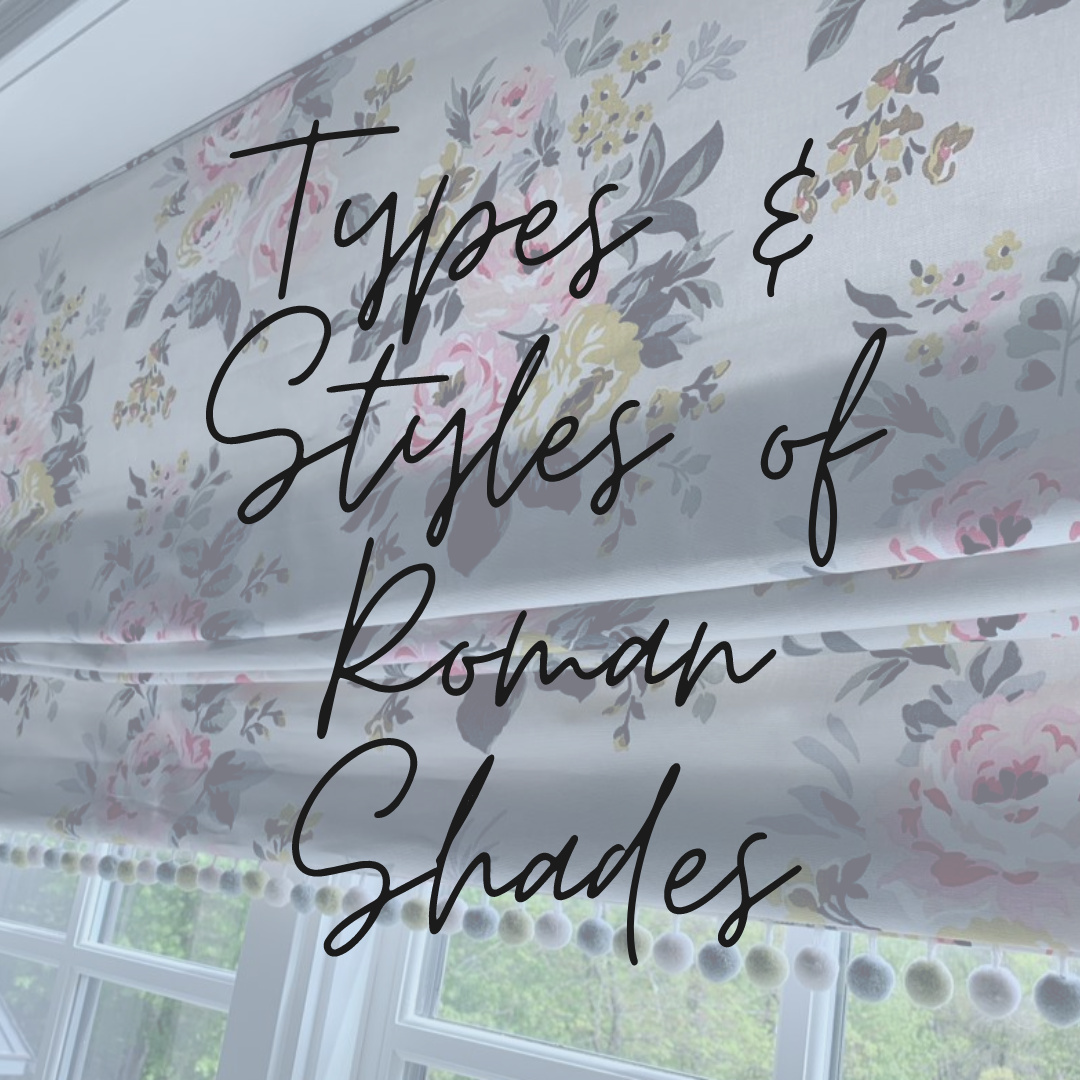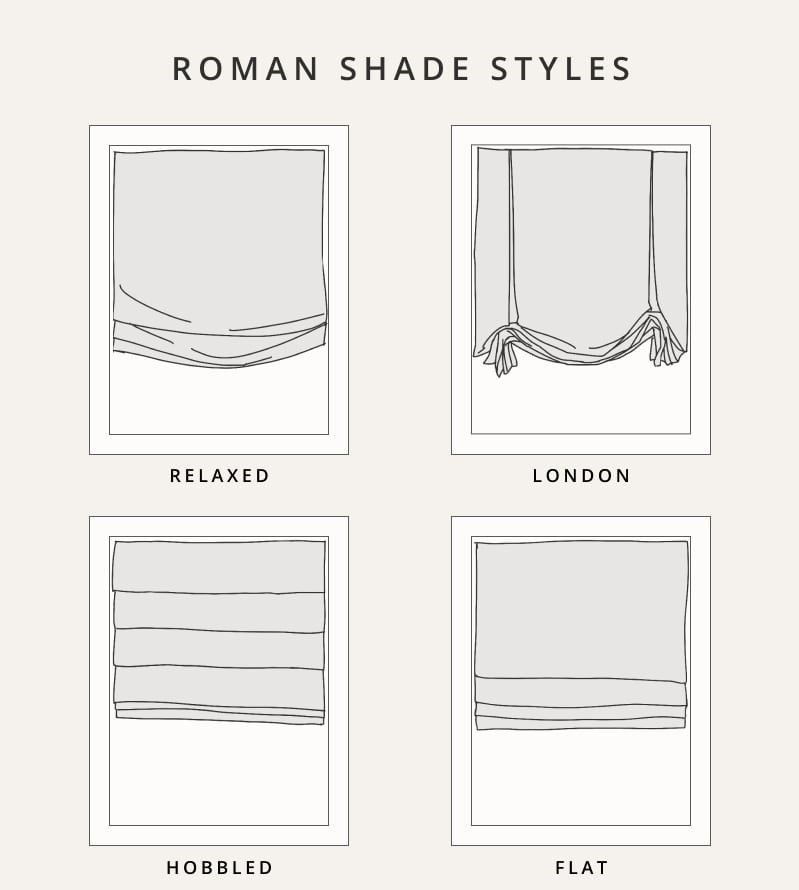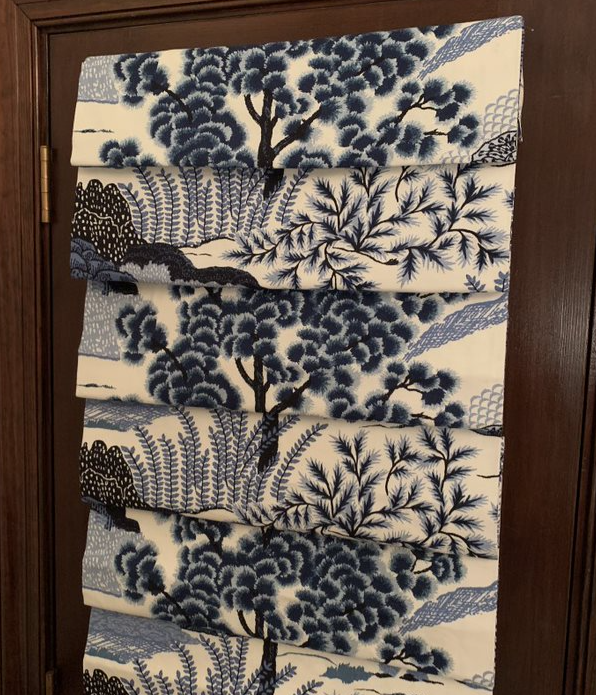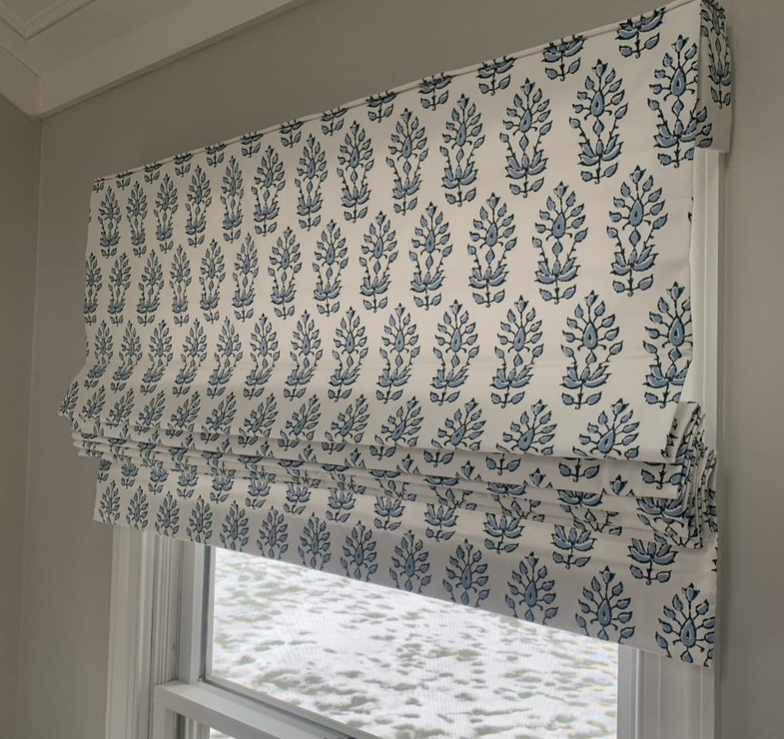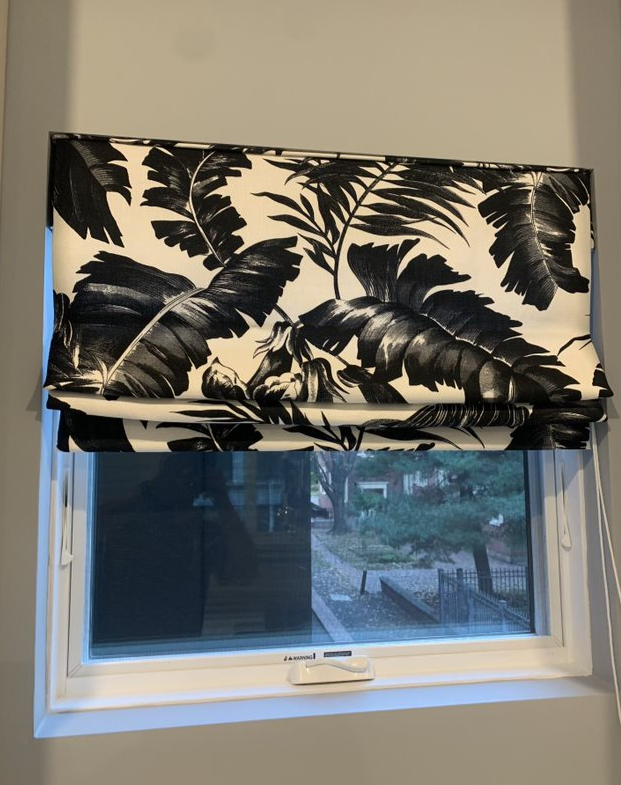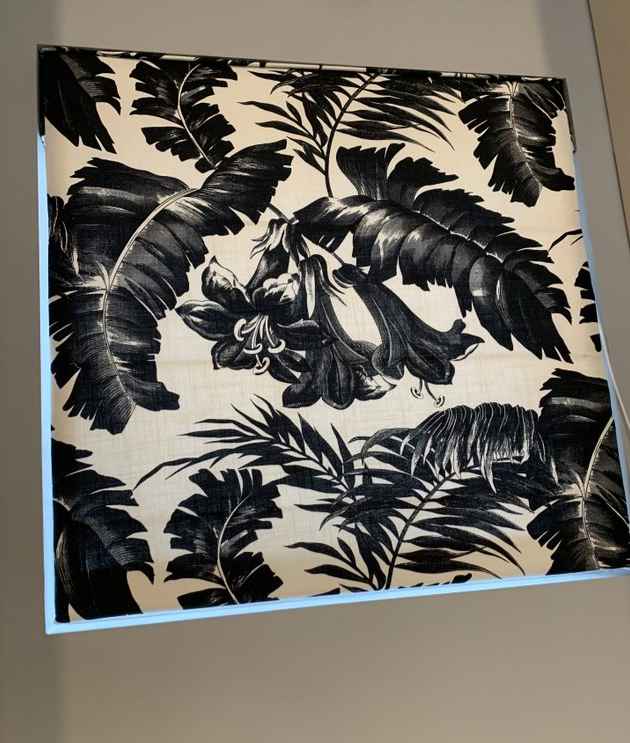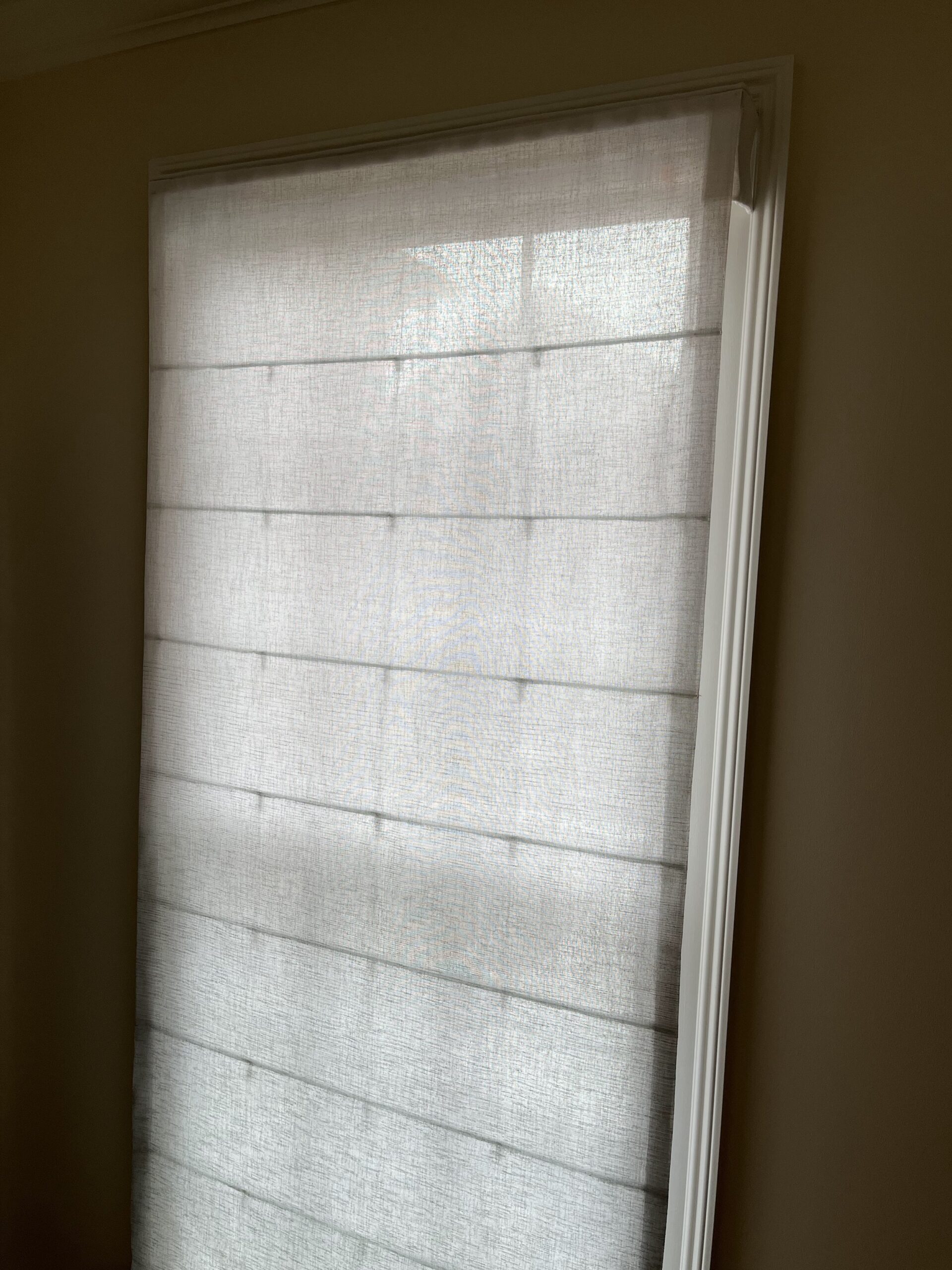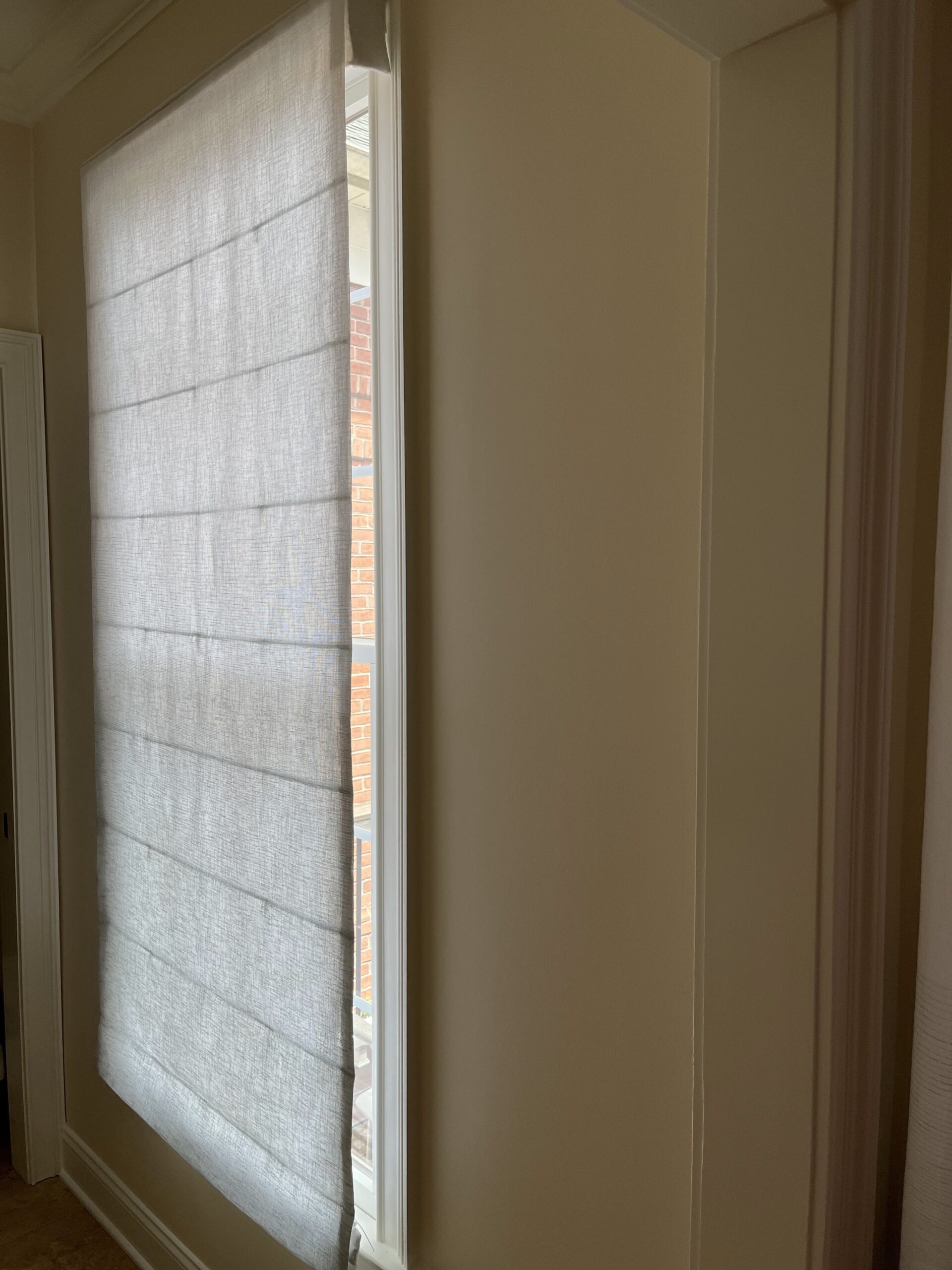Types & Styles of Roman Shades
Roman Shades are popular for a reason! There are many styles which can be customized to suit your functional and decor needs.
Today I’ll share a few popular styles, as well as some of the unique considerations when specifying Roman Shades.
Here’s a fun #FridayFact for you: Roman Shades are named as such because they really did originate in ancient Rome! It started with Roman households draping wet cloth over their windows to help keep out the dust from the construction of the Roman Colosseum.
It wasn’t long before the people of Rome began using colorful, ornate cloth adorned with beautiful patterns to give their windows style to go along with the added functionality.
Today’s Roman Shades have come a long way from that wet cloth. Here are a few of our favorite styles!
Roman Shades Styles
Types of Roman Shades. Image courtesy of Hydrangea Tree House.
There are four main Roman shade styles. A classic flat Roman shade is designed to fold up in evenly spaced sections when raised, creating a smooth, tailored look.
A hobbled Roman shade resembles a classic Roman shade but with a unique feature: When the shade is raised, the fabric folds into soft, cascading folds instead of crisp, straight lines.
A relaxed Roman shade combines the classic style of a Roman shade with a more relaxed, casual look. The relaxed shade has what is often referred to as a ‘little smile’.
The London Roman shade has a slightly looser, more relaxed fold when lowered and raised, and is usually made from a lighter, softer fabric that drapes more naturally. It has inverted pleats on the sides of the shade, resulting in a ‘scoop’ at the bottom and ‘fishtails’ down the side.
There are other styles of Roman shades – really there are endless styles and variations in the custom world – but these are the most popular types that we most often fabricate.
Hobbled Roman shade, collaboration with the talented Beth Robertson.
Flat Roman Shade, collaboration with the fabulous Kelly Ruggeri.
Pro Tip: It’s worth noting that clients often feel roman shades are a more affordable route since they require less fabric than a drapery panel.
However, what they might save in fabric they will make up for in construction. Custom window treatments have many moving parts – and those parts are often hand sewn in!
Roman Shades: Mounting Options
Inside mount flat Roman shade. Collaboration with the fabulous Henck Design.
Roman shades can be mounted inside the window frame, or outside.
Inside mount Roman shades, like the one seen above, are installed inside the window frame, affixed to the ‘ceiling of the frame’. They are stylish and sleek, providing a beautifully tailored look.
Pro Tip: This small Roman shade for Henck Design highlights how the right shade should be paired with the right fabric.
For example, this gorgeous pattern works without interruption in a flat roman shade. With a hobbled roman shade, the pattern would be interrupted and just not look right when pulled up.
Outside mount Roman shades, as seen here, are mounted outside the window frames/trims, affixed directly onto the wall or ceiling. They are an ideal solution for windows with shallow frames, that are simply not deep enough to mount a shade inside the frame. They are also a little more forgiving when it comes to measurements.
Pro Tip: Because the Roman shade pictured above is mounted on the outside of the window, there is a resulting gap. This gap is due to the board at the top of the roman shade as well as the lift system chosen. It’s key to remember when mounting on the outside – there WILL be a gap, so communicate this with your clients ahead of time.
See more on Window Treatment Friday Live!
You’ll find more inspiring projects and tips on our weekly Window Treatment Friday Live series.
Subscribe to my YouTube channel, so you never miss an episode. If you can’t join us live on Facebook and Instagram at 9am on Fridays, you’ll always be able to catch up by watching the replay on YouTube.
